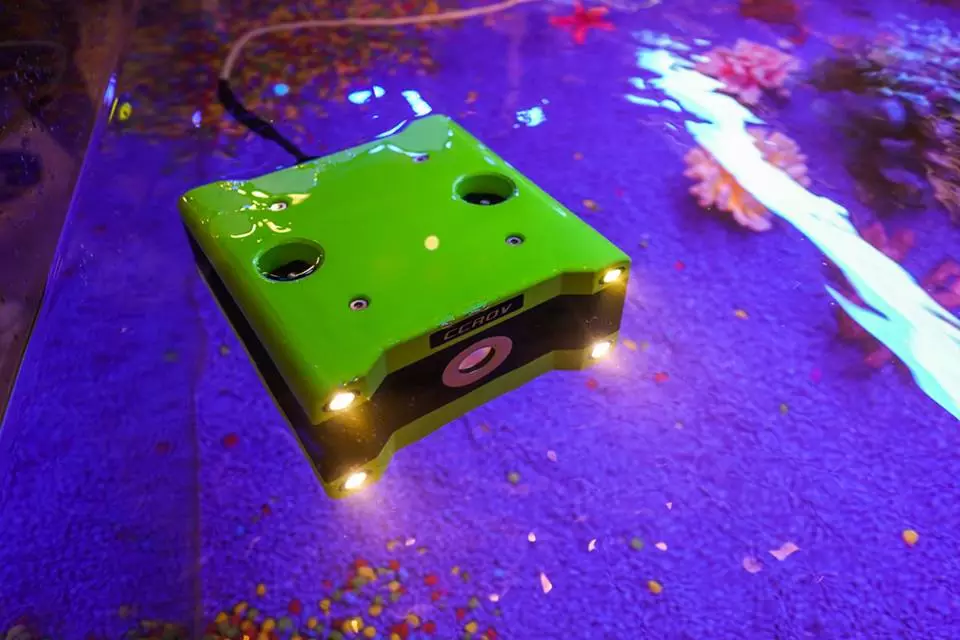The Trident ROV, Fathom One, BlueROV2 and iBubble are all in for some competition. Another "underwater drone" has taken to the crowdfunding circuit, this time in the form of the CCROV. While it offers the same basic functionality as those other models, it does have at least one distinguishing feature – an integrated 4K camera that sends real-time video to its operator.
By contrast, the Trident, Fathom One and BlueROV2's cameras all top out at a resolution of 1080p. The iBubble utilizes an added GoPro Hero4 camera, which can shoot at 4K. Like all four of the other "unmanned-mini-subs-on-a-budget," though, the CCROV is linked to its land-based operator by a control cable – unfortunately, radio waves don't travel well through the water.
Buyers can choose between cable lengths ranging from 20 to 100 meters (66 to 328 ft), all of which are reeled onto a shoreside "tether deployment system." That system communicates via Wi-Fi with the user's iOS/Android mobile device (or an optional joystick control unit) on which they use an app to both view output from the onboard camera, and control the drone down to its maximum dive depth of 100 m.
It should be noted that the Trident and Fathom One do things a little differently in the tether department. They can both be outfitted with a shorter cable that runs up to a Wi-Fi-equipped buoy that's towed along on the surface. That buoy in turn communicates wirelessly with the user, meaning that one long, heavy "sea-to-shore" cable is unnecessary.

Along with its 4K/25fps camera, the CCROV itself also features four 250-lumen LED spotlights and six thrusters – four for horizontal movement, and two for moving vertically. According to its designers, that latter feature allows it to have a much smaller turning radius than drones equipped with just three or four thrusters … which describes the Trident and Fathom One.
One 90-minute charge of its battery, which is located in the tether deployment system as opposed to the drone, should be good for about one hour of use.
If you're interested in getting a CCROV for yourself, it's currently the subject of an Indiegogo campaign. A pledge of US$1,599 will get you one with a 25-m cable, when and if they reach production. The planned retail price is $2,699 – for comparison, prices for the other models we mentioned range from $600 for the Fathom One up to $3,000 for the BlueROV2.
You can see the CCROV in underwater action, in the following video.
Source: Indiegogo





